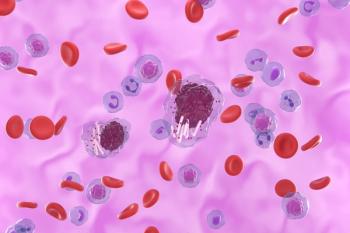
5.5% of US Population Are Cancer Survivors, and the Number Is Growing
Key Takeaways
- Cancer survivor numbers in the US are expected to exceed 22 million by 2035, with breast and prostate cancers most prevalent.
- Significant disparities in cancer care exist, particularly affecting Black patients and uninsured individuals, impacting treatment adherence and outcomes.
The most prevalent types are prostate cancer among men and breast cancer among women.
There are currently 18.6 million
These findings were published in the American Cancer Society journal
The number of cancer survivors varies by state. This was largely reflective of
The report also shed light on differences in care delivery. Among women with early-stage breast cancer, breast-conserving surgery with radiation is most common, but nearly one-third still undergo mastectomy. Additionally, while endocrine therapy is widely used for hormone receptor–positive disease, its use and adherence are significantly lower among Black women than White women, especially in stage III (65% vs 74%), highlighting a persistent treatment gap.
“Lower initiation and adherence rates largely drive the underuse of endocrine therapy in Black women,” the researchers noted. “For example, Black women were less likely to report full adherence to endocrine therapy 2 years after diagnosis (75% vs. 83% for White women; P < .001) and experienced more treatment-related side effects.”
These gaps don’t just apply to breast cancer. Among patients diagnosed with stage 1 colorectal cancer, those without insurance had worse 5-year survival than patients with private insurance with more advanced stage 2 disease.3 Similarly, in 2021, only 47% of Black patients with stage 1 or 2 lung cancer underwent surgery compared with 52% of White patients. The treatment gap was even wider in rectal cancer, with 64% of White patients with stage I disease undergoing surgery compared with only 39% of Black patients.
“Efforts to expand access to high‐quality care regardless of your skin color or bank balance are vital to reducing disparities and advancing equity for everyone affected by cancer, which is ultimately all of us,” Rebecca Siegel, MPH, senior scientific director of cancer surveillance research at the American Cancer Society and author on the study, said in a news release. “We need to do more to level the playing field and end barriers to quality care both during and after treatment.”
References
- Sandeep Wagle N, Nogueira L, Devasia TP, et al. Cancer treatment and survivorship statistics, 2025. CA Cancer J Clin. Published online May 30, 2025. Accessed May 30, 2025. doi:10.3322/caac.70011
- Rodriguez DM. U.S. population projected to reach 341,145,670 at midnight EST on January 1. United States Census Bureau. December 30, 2024. Accessed May 30, 2025. https://www.census.gov/library/stories/2024/12/new-year-population.html
- New ACS study: number of cancer survivors in the U.S. reaches 18.6 million — projected to exceed 22 million by 2035. American Cancer Society. News release. May 30, 2025. Accessed May 30, 2025. https://pressroom.cancer.org/Cancer-Survivors-Increase
Newsletter
Stay ahead of policy, cost, and value—subscribe to AJMC for expert insights at the intersection of clinical care and health economics.









































